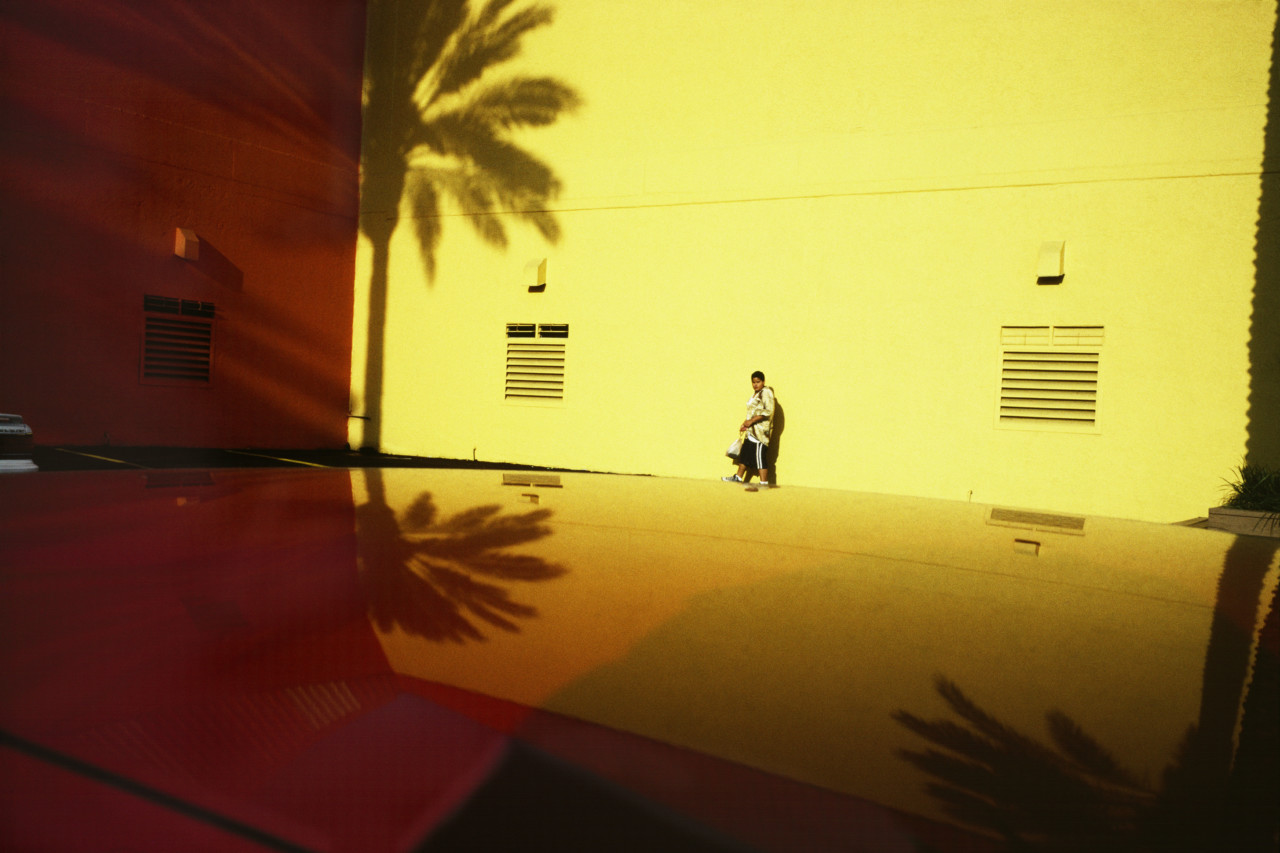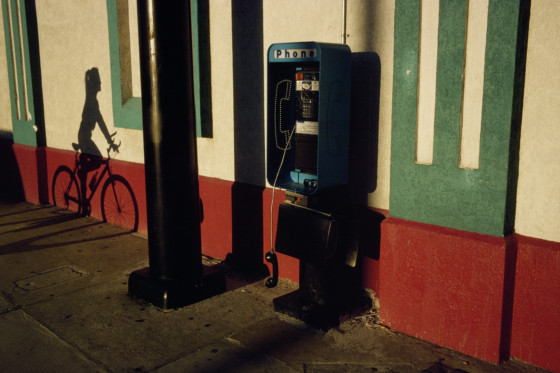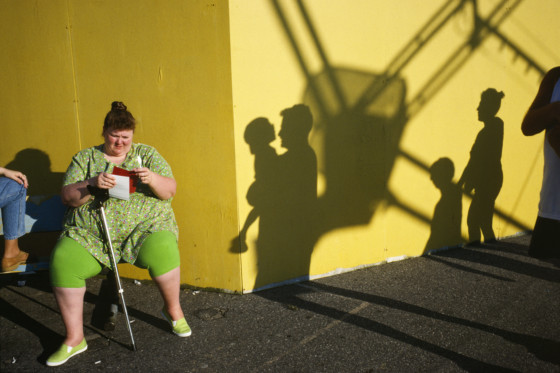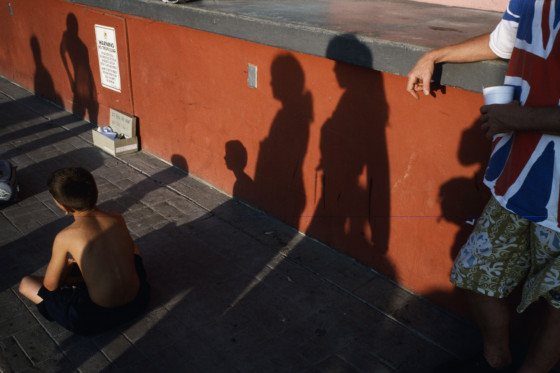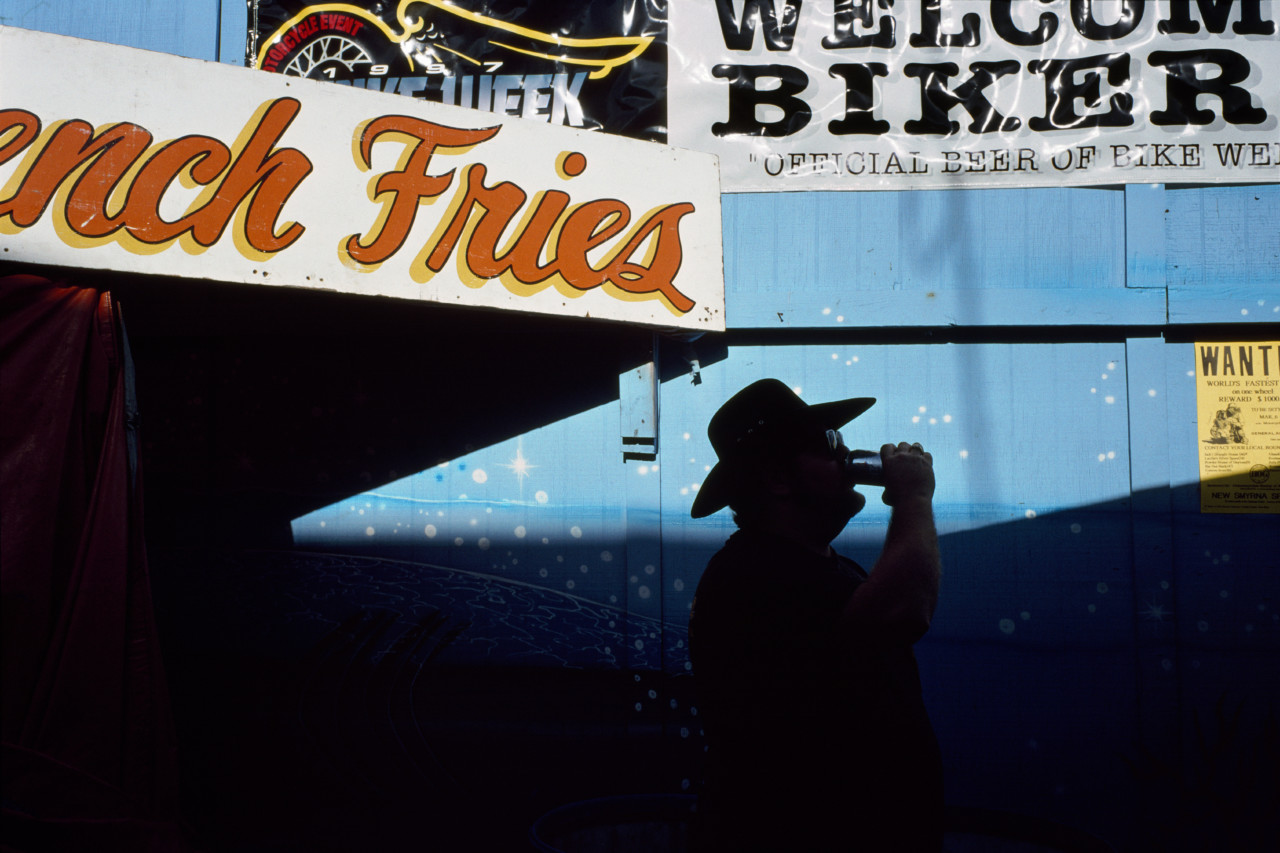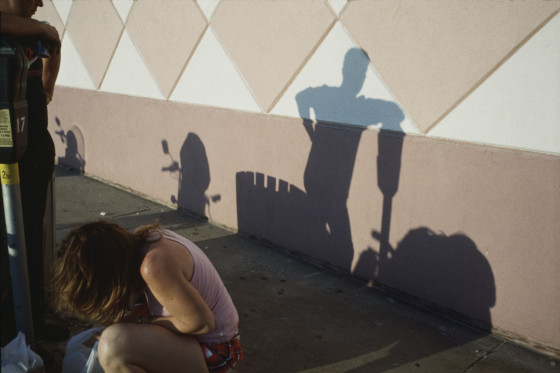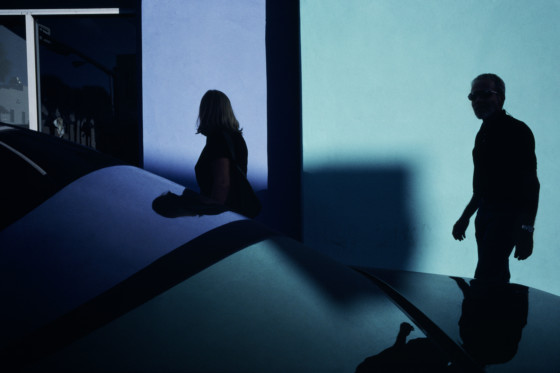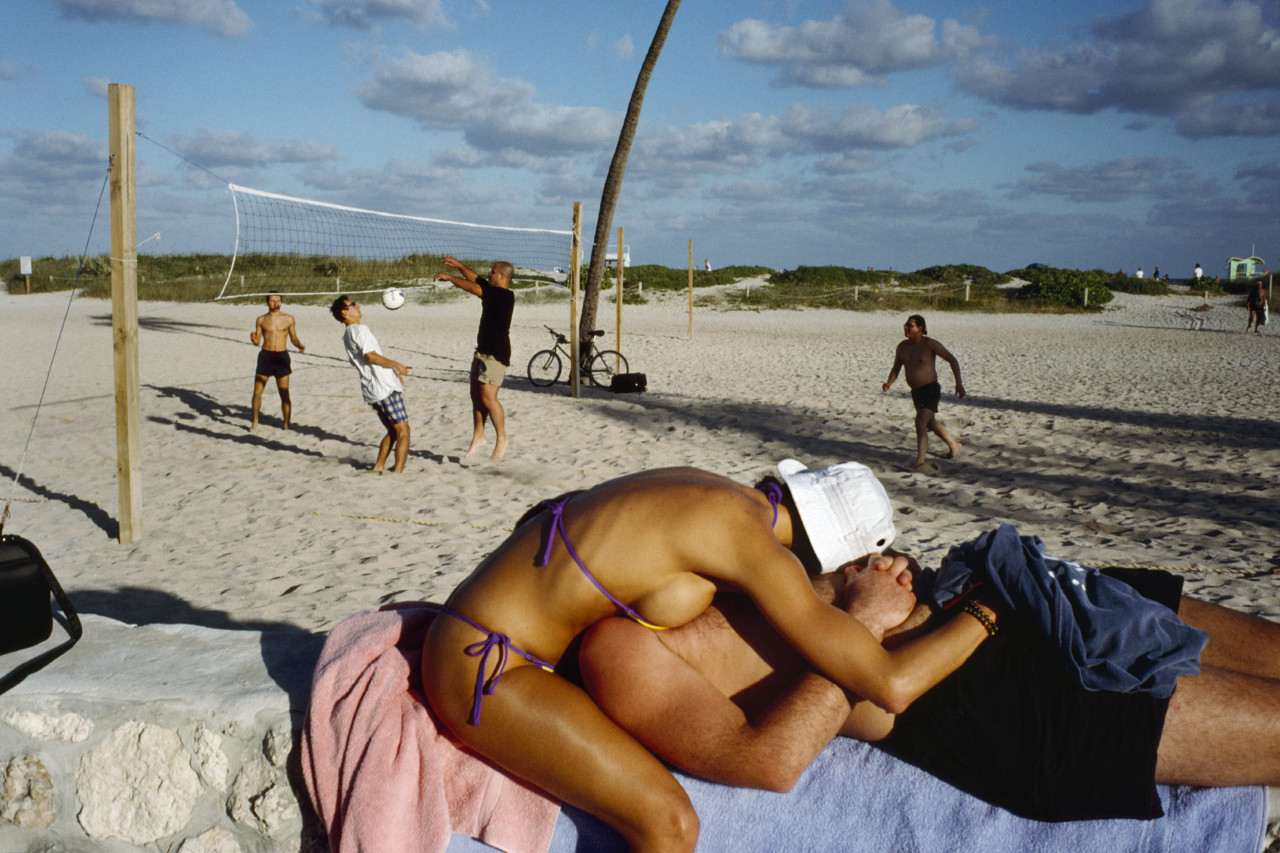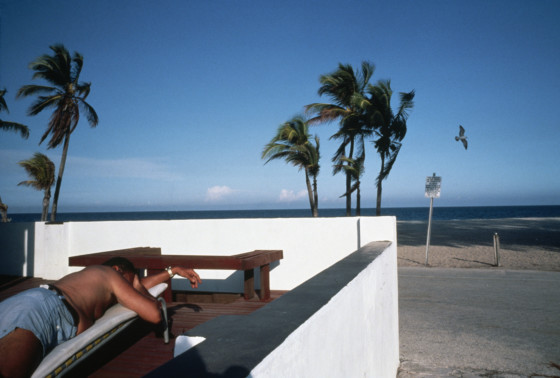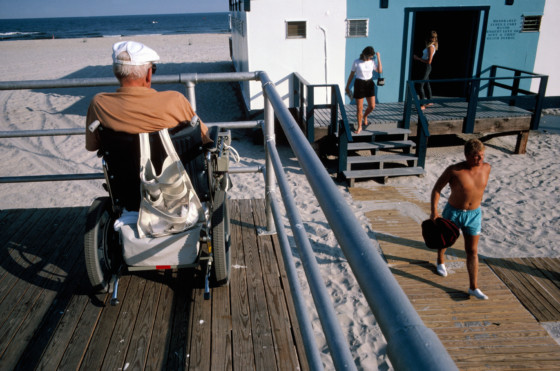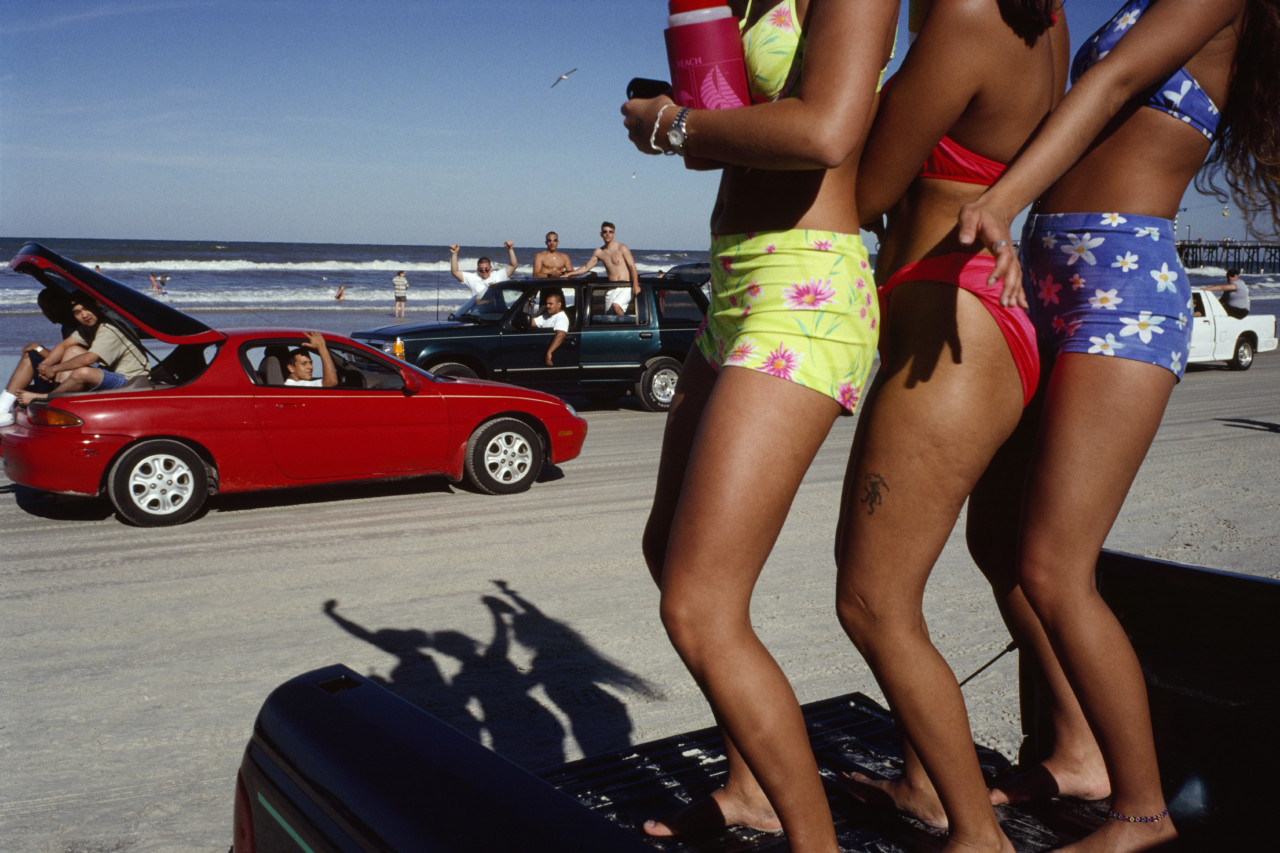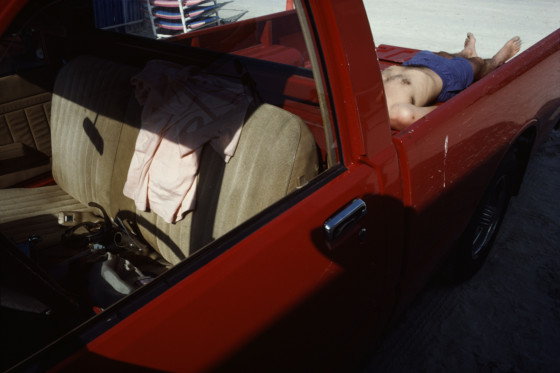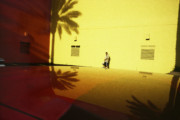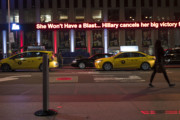America at the Beach: A Color Study
Constantine Manos captures the vibrant energy of American life on the coast
Constantine Manos’ color-saturated images seem especially alive when made under the hot sun on the beaches of America, the vitality of the colors matched by the dynamism of composition–with figures in motion casting shadows against brightly painted walls, moments of joy and fun are captured in the frenetic scenes.
“I think that color is more vibrant at the beach – probably because of reflection from the sand, which is usually white,” says Manos, considering the especially affecting deployment of color in his two books American Color and American Color 2.
And it’s not just color that makes the beach an ideal location for a photographer to explore; the laid-back mood and busy environment conspire to make the beach Manos’ preferred setting. “At the beach, one may find a wide variety of individuals and groups – a cross-section of humanity,” Manos explains. “A skillful photographer may work unobtrusively and catch lovely moments of interaction within various groups of people. For me it is the most enjoyable place to make pictures of people, my favorite subject.”
"A skillful photographer may work unobtrusively and catch lovely moments of interaction within various groups of people"
- Constantine Manos
“On the beach people are relaxed,” he continues. “They are having a good time and enjoying the sun and surf, so much so that they are oblivious to the photographer – provided that he moves discreetly and never locks in on any one group or individual too long.”
“There’s an energy at the beaches of America that isn’t replicated anywhere else in the country in quite the same way: people are uninhibited, they interact more personally than anywhere else in the public domain. Lovers kiss and men hug their wives and play with their children. Fat people and skinny people are not ashamed to show their bodies. Families bring their awnings, set up tables, and have lunch,” explains Manos.
"Beaches are very democratic"
- Constantine Manos
Despite the universalities of life at the beach in America, each location has its own unique personality. “All the beaches are different,” says Manos: “Daytona Beach in Florida is very wide and was once open to cars driving on the beach” – something the photographer captured in one of his most-loved images, of a group of women dancing in the back of a truck, their shadows showing their hands aloft, as two cars of men look on.
Elsewhere, “Venice Beach in California draws a younger crowd and has great skateboarding, as well as an area for weightlifters; the New England beaches are more sedate and the water is colder; Herring Cove Beach on Cape Cod faces the West and is one of the few beaches from which viewers on the East Coast can see the sun set – a favorite opportunity for photographers,” Manos notes.
For Manos, the best of life can be found at the beach: family memories are made, young people flirt, people kick back and relax uninhibited – “Beaches,” Manos says, “are very democratic”.
Published as part of Magnum’s summer series of stories: ‘Life by the Sea: Exploring identity through society at leisure and the pursuit of pleasure’. See the rest of the stories from the series here.
Browse the Life By The Sea poster and fine print collection on the Magnum Shop


